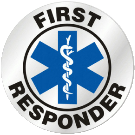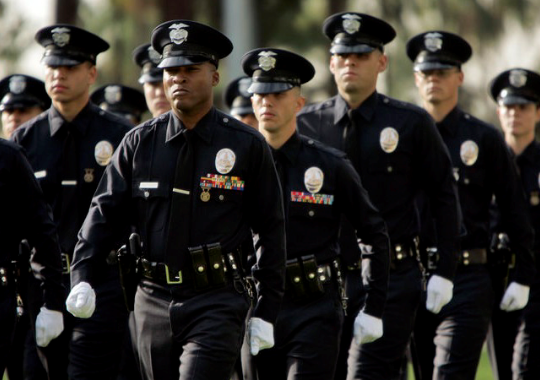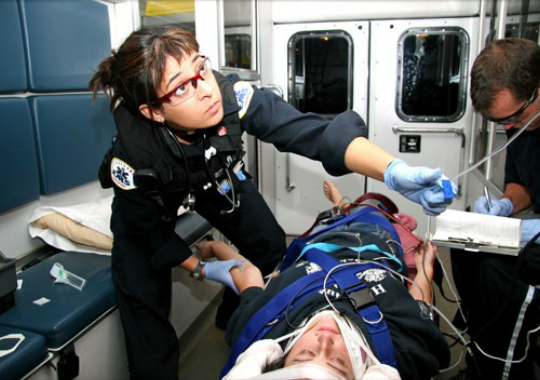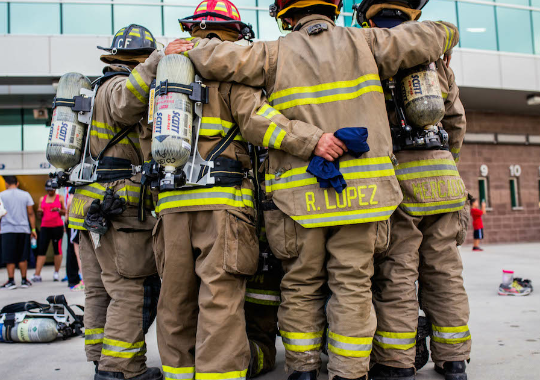
First Responders
Providing Support and Resources



First Responders
First responders are always at the forefront of each incident or disaster, and they ensure the safety and well-being of the population. They are, however, at great danger of being exposed to potentially traumatic situations that pose risk of harm to them or the people under their care. This constitutes a great risk for the behavioral health of first responders, putting them at risk for stress, PTSD, depression, substance use, and suicide ideation and attempts. Both natural and technological disasters were found to be associated with increased risk of these conditions, as were factors such as resiliency, trust in self and team, duration on the disaster scene, individual coping style, and post-disaster mental health support.
Providing support and services to:
- Firefighters
- Paramedics
- Police officers
- Military personnel
- Mental health workers
- Emergency dispatchers
Mental Health Statistics - First Responders
National Stats:
In a nationwide survey of more than 2,000 first responders, 85 percent reported mental health symptoms. One-third reported clinical diagnoses of depression or post-traumatic stress disorder (PTSD). While these numbers loom large, seven out of 10 of those surveyed claimed mental health services are rarely or never utilized by their organization with four out of 10 individuals reporting concern about repercussions for seeking help at work. (“Mental Health Survey Shows Trauma Among First Responders,” NBC 7 San Diego, April 19, 2017).
Behavioral Health Conditions in Police Officers
Police officers are at increased risk of negative mental health consequences due to the dangerous nature of their jobs as well as the greater likelihood that they experience critical incidents, environmental hazards, and traumatic events (Heavey et al., 2015). In a study, about three-fourths of the surveyed officers reported having experienced a traumatic event, but less than half of them had told their agency about it. Additionally, about half of the officers reported personally knowing one or more law enforcement officers who changed after experiencing a traumatic event, and about half reported knowing an officer in their agency or another agency who had committed suicide (Fleischmann et al., 2016).
DEPRESSION
Depression has been reported in police officers. A study following police officers after the 9/11 attacks found a 24.7 percent prevalence of depression, and a 47.7 percent prevalence of both depression and anxiety (Bowler et al., 2016).
STRESS AND POSTTRAUMATIC STRESS DISORDER/SYMPTOMS
In a study following Hurricane Katrina, PTSD was reported in between 7 and 19 percent of a sample of police officers (McCanlies, Mnatsakanova, Andrew, Burchfiel, & Violanti, 2014). After the World Trade Center attack, PTSD was reported in 11 percent of police responders, PTSD increased as the level of social support decreased, and the PTSD prevalence was relatively high among those unable to work because of health (34.8 percent) and those with unmet mental health needs (50.7 percent). Additionally, the prevalence was higher in women (15.5 percent) than in men (10.3 percent) (Cone et al., 2015). As discussed earlier, this difference may be attributable to social pressures associated with working in a male-dominated profession as well as to women’s experiencing more occupational discrimination than their male peers (Jahnke et al., 2012). In another study, the prevalence of probable PTSD in police officers following the 9/11 attack was 12.9 percent (Bowler et al., 2016).
SUBSTANCE USE
In a study investigating alcohol use in police officers following Hurricane Katrina, there was a significant association between involvement in the hurricane relief efforts and hazardous alcohol drinking (Heavey et al., 2015). In another study, the average number of alcoholic drinks after Hurricane Katrina increased from 2 to 7 drinks per day (McCanlies et al., 2014).
SUICIDE/SUICIDE IDEATION
Suicide attempts and ideations were reported in multiple studies. In a literature review, the lifetime prevalence of suicidal ideation in police officers was 25 percent in female officers and 23.1 percent in male officers (Stanley et al., 2016). Suicide attempt rates ranged from 0.7 to 55 percent among studies. In a national analysis of law-enforcement suicide, proportionate mortality ratios (PMRs), or the ratio of the death count for an occupation to the expected number of deaths in all occupations combined, were significantly high for all races and sexes combined (all law enforcement-PMR = 169 percent) (U.S. Department of Health and Human Services, Centers for Disease Control and Prevention, National Institute for Occupational Safety and Health, 2016; Violanti, Robinson, & Shen, 2013).
Another study linked strain on the job to suicidal ideation, as well as depression and anger. Officers with burnout showed significantly greater suicide risk, with a 117 percent greater likelihood of suicidal thoughts for officers who reported burnout at work (Bishopp & Boots, 2014).
Things to Know
The community of first responders must begin by accepting mental healthcare and mental illness as normal. The following are recommendations for eliminating the stigmatization:
- BE EDUCATED with the facts concerning mental illness.
- First responders must be taught to be EMPATHETIC not only to the public, but to those that are serving with them.
- Avoid the stereotyping of those who have a mental condition.
- First responders should be encouraged to have an accountability partner. An ACCOUNTABILITY PARTNER is someone that you can lean upon, have your voice heard, and they too can mirror the same needs in times of desperation. Hearing of someone else’s challenges can reinforce the idea that you are not alone, as well as strengthen your integrity.
- Being involved in your community will allow you to see that you are not alone in this game called life and will provide you insights into how others will face personal challenges.
- AVOID THE COMPARISON. Do not compare yourself unto others.
- MONITORING YOUR CONVERSATIONS Deny room for conversations that are belittling or disparaging another’s character. Encourage conversations that are uplifting and inspiring. Discourage any conversations that are rooted in the belittling of mental healthcare or mental illness.
- We must begin to CHANGE THE PERCEPTION OF MENTAL ILLNESS. After all, mental illness is is an illness and should be treated as all other physiological illnesses.
- The community of first responders must become better informed and educated on the concepts of mental illness and mental healthcare.
Eliminating the Stigmatization of First Responders
The first responder community must begin recognizing that mental healthcare and mental illness are no different than any other health care need.
For first responders, the time has come to stop being the tough guy. You no longer need to stand behind the shield as a source of defense.
https://www.psychologytoday.com/us/blog/towards-recovery/201705/first-responders-and-mental-health
First Responders Substance Abuse and Mental Health Resources
Every day, first responders are exposed to dangerous and traumatic events that could lead to the development of mental health and substance use disorders.
Please click below to find some excellent resources directed to assist first responders who are battling mental health issues or substance abuse.
Therapy for All
Get access to confidential therapy with a licensed clinician via app and web. Use code "myparachute" to get $100 off your first month.
Emergency Help
If you are in crisis, call the toll-free National Suicide Prevention Lifeline at 1-800-273-TALK (8255), available 24 hours a day, 7 days a week. The service is available to anyone. All calls are confidential.
Therapy for All
Get access to confidential therapy with a licensed clinician via app and web. Use code "myparachute" to get $100 off your first month.


